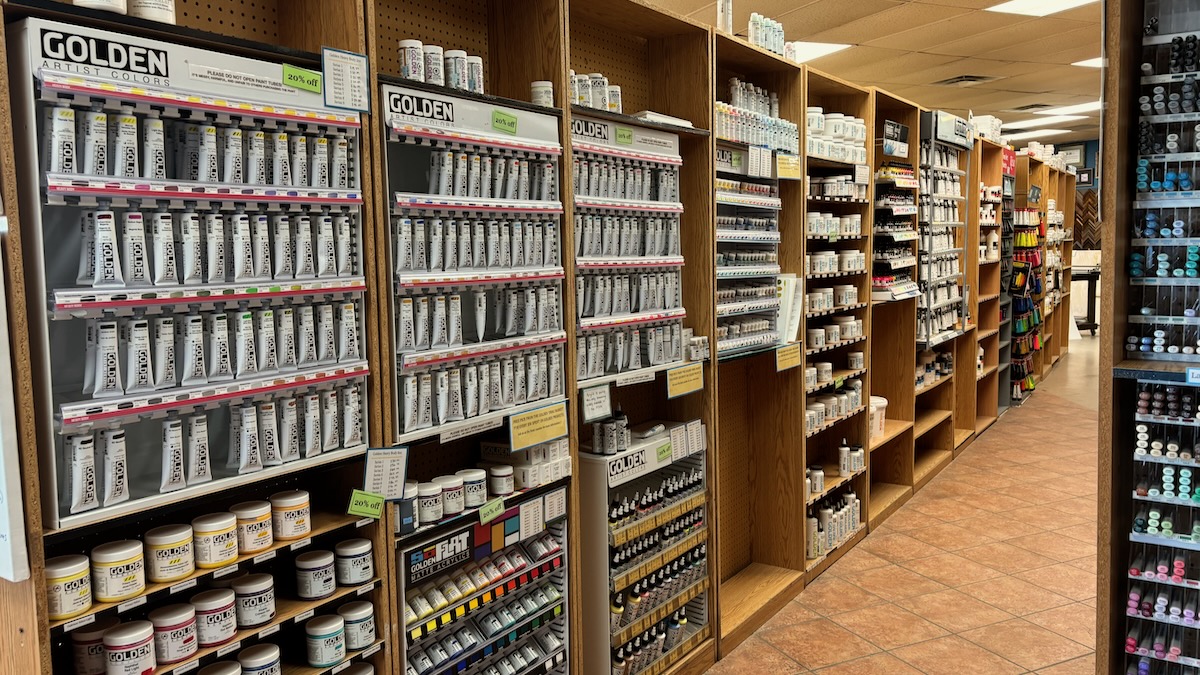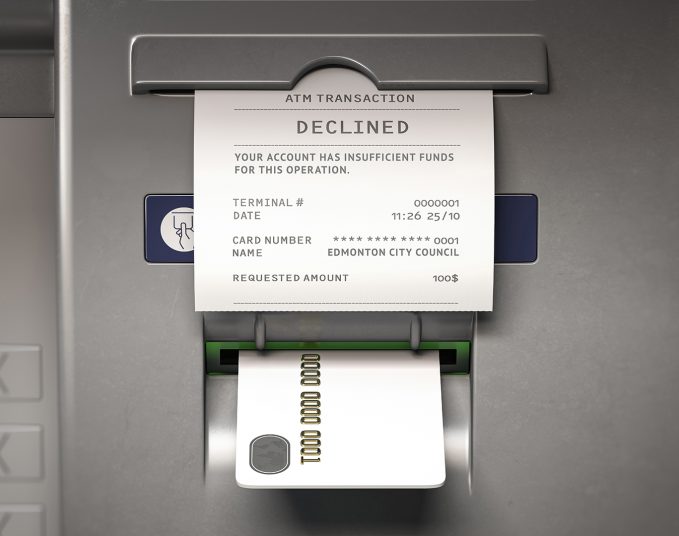Six thousand.
That’s approximately how many boxes Mythworks, the publisher for the widely successful tabletop role-playing game Slugblaster, has sitting in a warehouse in China. Created by Edmonton game designer Mikey Hamm, the boxes, complete with rulebook, dice and stickers, are currently stuck due to the Trump tariffs.
Over the past few months, President Trump has been threatening, imposing, and pausing tariffs on Canada and the rest of the world, ultimately landing on a base 10 per cent on all goods coming into the U.S. from every country. However, he doubled down on China, raising tariffs to 145 per cent. Since roughly 80 per cent of Hamm’s customers live in the U.S., this means the cost of shipping his game from China will skyrocket to unaffordable levels.
While most people associate tariffs with large-scale manufacturing and working class jobs, the trade taxes have major implications for artists and creative professionals, affecting their customer base, their material costs, or, in the case of Hamm, their distribution costs.
Hamm, creator of the crowdfunded role-playing game Slugblaster — about small-town teens on hoverboards sneaking into other dimensions — never imagined tariffs would affect him. As with most tabletop role-playing games, Slugblaster is formatted as a rule book, and books, thanks to first amendment trade agreements, are exempt from most trade tariffs.
Then Hamm got the call from his U.S.-based publisher, breaking the bad news. The simple addition of six purple dice and a packaged box — an inclusion intended to make Slugblaster more marketable to game stores — meant Hamm was no longer selling what could be classed as literature, he was selling a product subject to a tariff of 145 per cent.

“And as soon as you do that,” says Hamm, “it’s now a completely different product in the eyes of a customs officer.”
Problems affecting the creative class require creative solutions in order to mitigate the potential risks of an ever changing economy. One way, says Marian Switzer, owner of the Gilded Rabbit, a local fine art supply store, is looking for ways around the tariffs such as finding replacements for American products, and taking advantage of what her current distributors already have on the ground in Canada.
In an attempt to bypass many of the tariffs, Switzer took it upon herself to buy as many American products as she could before the tariffs took effect, effectively cleaning out many of her U.S. suppliers.
Luckily for Switzer, most of her products already come from Europe, and during the COVID-19 pandemic, she’d already switched many of her distributors over to Canada. “I had preemptively put myself in a good position for that,” said Switzer. “There’s enough replacements for a lot of the American-made products that aren’t American that I’ve been bringing in instead.”
Even though Switzer is confident that she will not see any major affects of the tariffs on her business for some time, the effects that fine artists around Edmonton will see is still to be determined. With a base tariff of 10 per cent on all goods, the cost of materials are expected to rise, but it looks as if the biggest issue artists will face is shipping their products internationally.

There is still no clear answer on whether “art” itself is subject to tariffs. According to a recent article published by Artsy, a leading online marketplace for artists and art collectors, “artworks,” are currently exempt from tariffs for exports to the U.S. But things get slightly more complicated when it comes to importing from the U.S. to Canada; artworks were included in Canada’s list of retaliatory tariffs. However, these lists tend to cover traditional fine art and leave a grey area around non-traditional works like functional art, design objects, and limited editions.
It begs the question: What constitutes an artwork? With no clear answer, artists are left to navigate a system that’s as vague as it is consequential.
Regardless, the rising cost of shipping — driven by global supply chain pressures — combined with stricter customs regulations under the United States-Mexico-Canada Agreement (USMCA), is making cross-border art sales more complicated. For Canadian professionals with U.S. clients, any product crossing the border must now meet USMCA compliance standards or risk being hit with added tariffs, adding layers of cost and uncertainty to each transaction.
Although there is still a lot of uncertainty of exactly how the tariffs will affect her customers, and her business, there has been some good that has come out of the chaos. “It’s been better for us because we have seen an increase of people coming through the store buying and shopping locally,” said Switzer, who continues to monitor her situation and look for ways to phase American products out of her store.
Hamm is also looking on the bright side, even while he scrambles to continue to find a way to get his game out of the warehouse in China. “Having to even have this problem means that I have a successful product,” said Hamm, “so I’m hesitant to complain too much.”
Savvy AF. Blunt AF. Edmonton AF.




